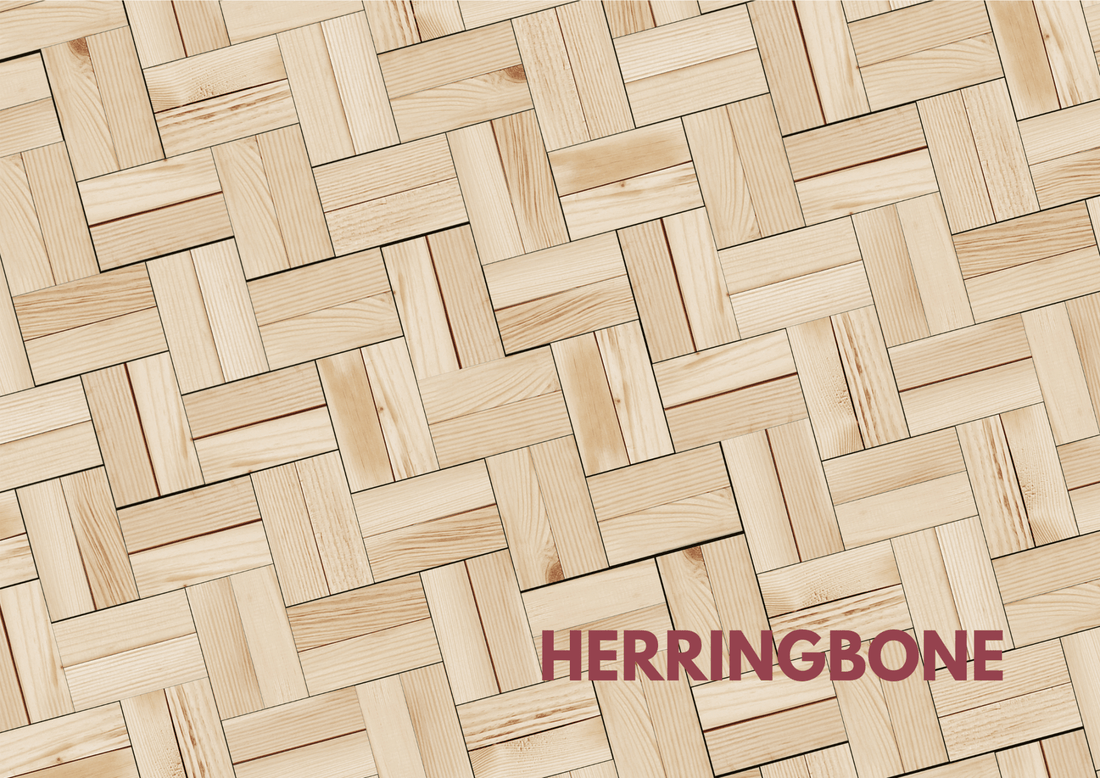As we continue to explore the stories behind the patterns featured in our EUR Collection of printed Swedish dishcloths,
we turn our attention to a design as sturdy as it is stylish: the Herringbone pattern. With its distinctive V-shaped weaving technique reminiscent of the skeleton of a herring fish, this classic motif has traversed centuries, cultures, and design disciplines, emerging as a symbol of resilience, craftsmanship, and timeless elegance. Its geometric harmony and structural integrity make it a natural choice for a collection that celebrates both form and function.
The origins of the Herringbone pattern are deeply rooted in antiquity, where it first appeared in the fabric of ancient civilizations. The Romans, renowned for their engineering marvels, utilized the pattern in the construction of roadways and structures, such as the famed Via Appia, where interlocking stones were arranged in a broken zigzag formation to create durable and stable surfaces capable of withstanding heavy traffic and the passage of time. This technique, known as opus spicatum (“spiked work”), allowed for greater load distribution and became a hallmark of Roman ingenuity. Similarly, the pattern was employed in textiles and pottery by the Egyptians and Celts, showcasing its universal appeal and practical advantages. Beyond its utility, the Herringbone pattern also carried symbolic meaning—its continuous, interconnected design was often seen as a representation of harmony, balance, and the woven tapestry of life.
Throughout history, the Herringbone pattern has gracefully transitioned from ancient roads and textiles to the forefront of contemporary design. In the world of fashion, it has been embraced by luxury brands and tailors for its ability to add depth, texture, and a touch of refinement to garments. Iconic designers such as Burberry and Ralph Lauren have incorporated Herringbone into their collections, using it in everything from tailored suits and outerwear to accessories and footwear. The pattern’s slimming effect and visual interest make it a perennial favorite in both classic and modern wardrobes. Beyond apparel, Herringbone has also found a home in jewelry and watchmaking, where its precise, geometric layout conveys a sense of order and sophistication.
In architecture and interior design, Herringbone remains a powerful statement of elegance and durability. From the parquet floors of European palaces—such as those in the Palace of Versailles—to the brickwork of Tudor-era buildings in England, the pattern has long been associated with craftsmanship and luxury. Today, it continues to be a popular choice for flooring, backsplashes, and accent walls in homes and commercial spaces around the world. Interior designers often use Herringbone in tilework, woodwork, and textiles to create movement and visual intrigue within a space. Its ability to work with a variety of materials—from warm hardwood to cool marble—and to complement both traditional and minimalist aesthetics underscores its remarkable versatility.
The Herringbone pattern’s symbolic resonance extends beyond its aesthetic and functional qualities. It is often associated with strength, stability, and interconnectedness, making it a meaningful motif in contexts that value resilience and unity. In corporate branding, companies like Tiffany & Co. and Hugo Boss have used Herringbone-inspired designs to evoke precision, reliability, and timeless style. Educational institutions, such as Oxford and Cambridge Universities, incorporate the pattern into their crests and architecture to symbolize tradition and excellence. Even in modern graphic design and digital interfaces, the Herringbone pattern is used to convey organization, flow, and structural integrity.
With the introduction of the herringbone pattern into our EUR Collection, we invite you to embrace a design where strength meets subtle sophistication. Each dishcloth is crafted not just for utility, but to bring the enduring spirit of craftsmanship into your home. Like the interlocking elements of the pattern itself, it’s a reminder that beauty often lies in structure, repetition, and the thoughtful arrangement of simple forms. We hope this timeless motif adds a touch of tactile elegance and resilient style to your everyday moments.


